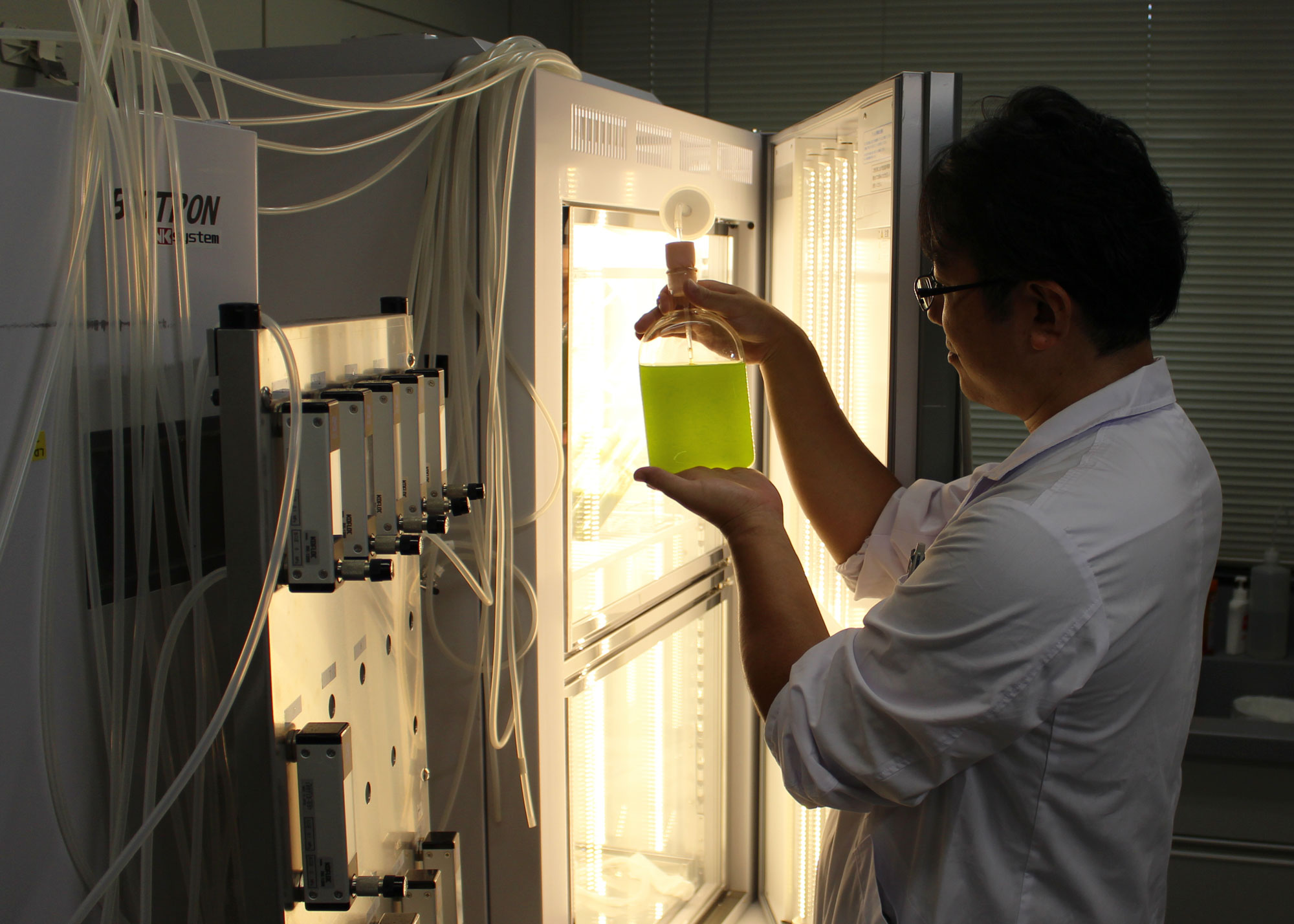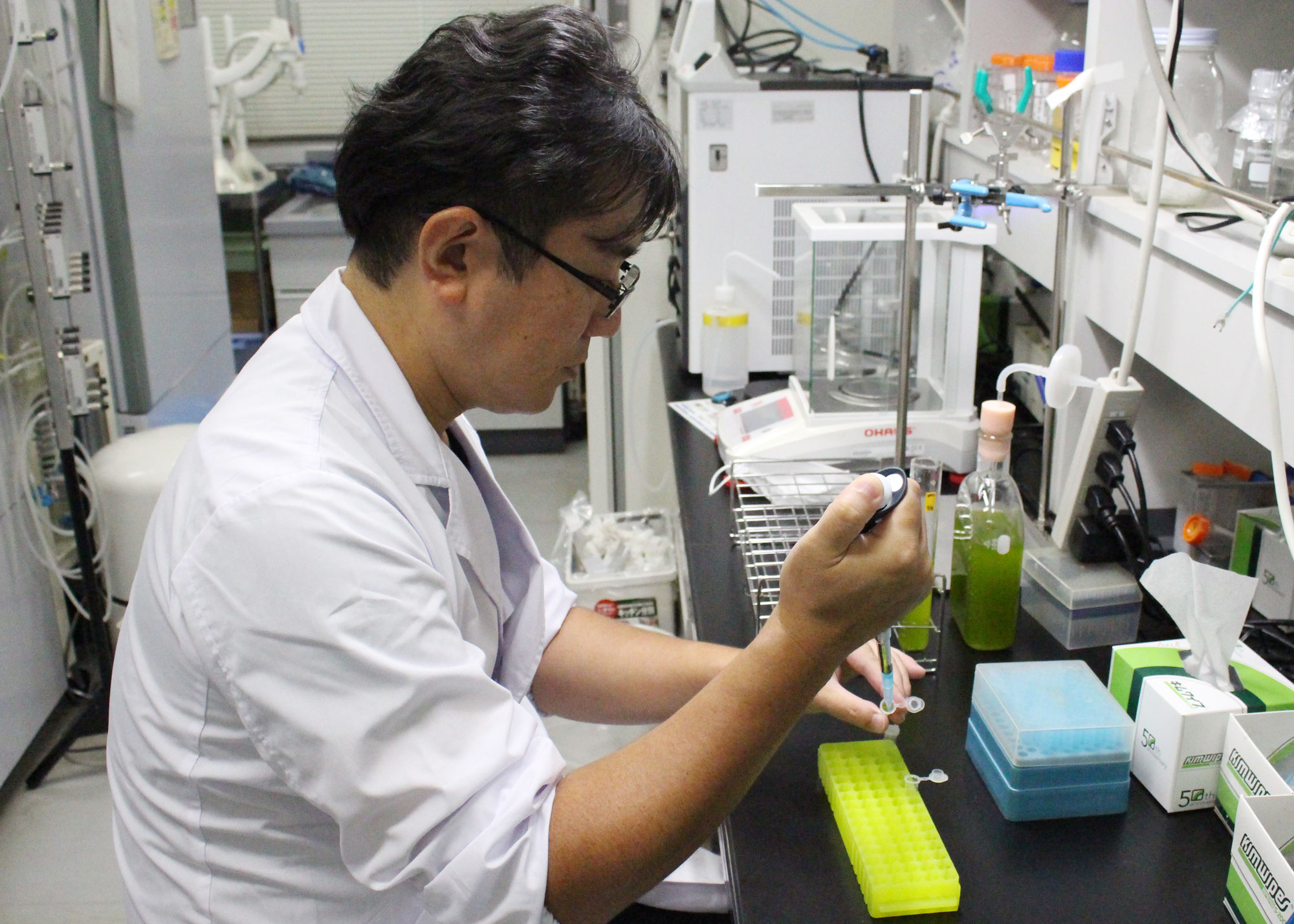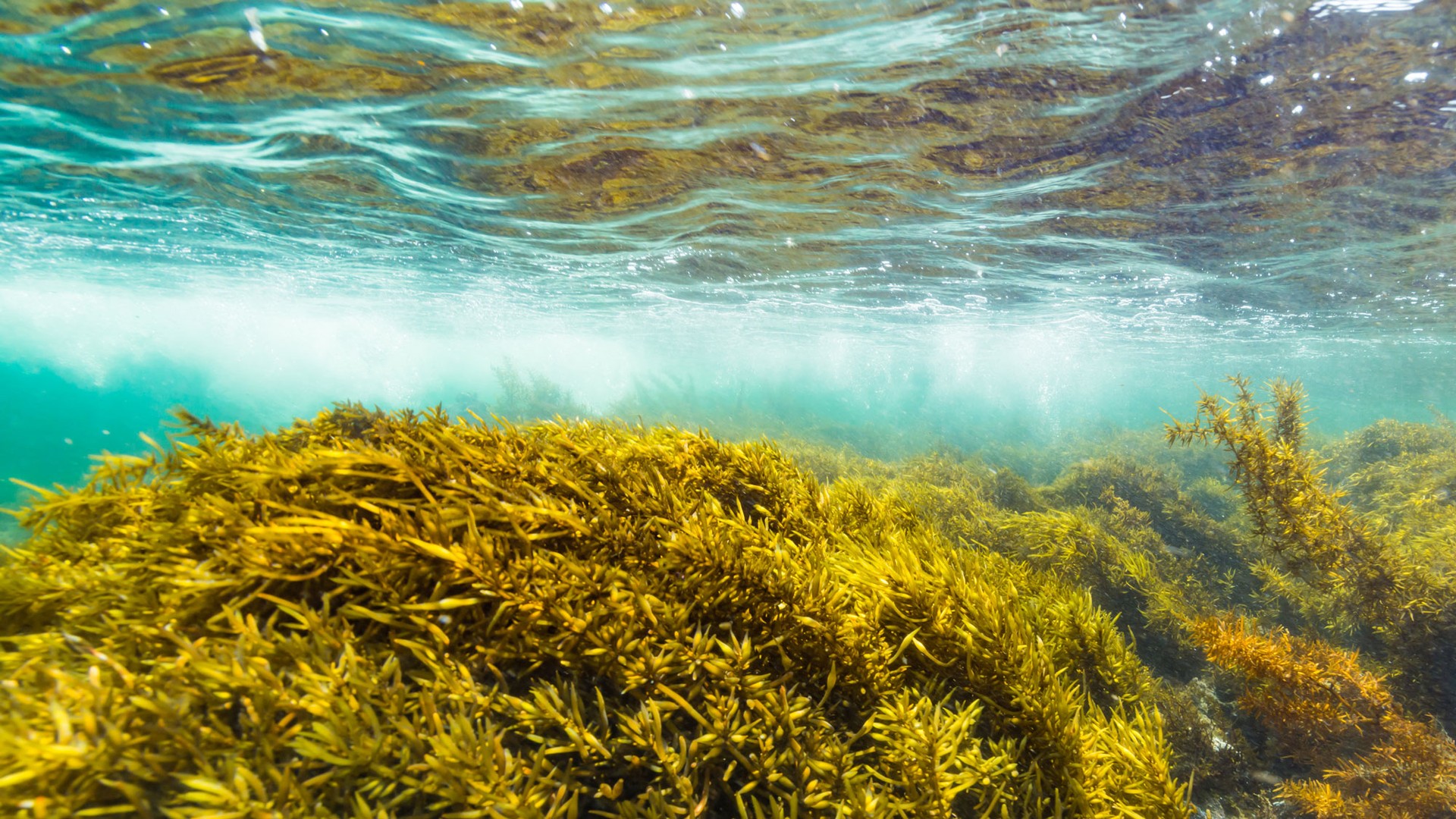INNOVATE
The Eco-friendly fuel of the future
A carbon-neutral crop that can contribute to the mitigation of climate change, algae are also a viable source of biofuel. Working with Hiroshima University, Mazda is making significant inroads into its future use.
Seaweed is synonymous with Japanese cuisine and has been cultivated since organized farming began in Edo Bay (Tokyo Bay today) in the mid 17th century. It is also the focus of climate-change-enforced innovation, as farmers look to cross-pollinate varieties to create new crops more resilient to rising sea temperatures.
Seaweeds and other algae can be grown without the need for pesticides and fertilizers, and do not cause any major physical change to the environment. Moreover, they can play an important role in fighting climate change by absorbing carbon emissions from the atmosphere and regenerating marine ecosystems. They are also developing a reputation as a sustainable and eco-friendly resource for biofuel production.
Biofuels are liquid fuels produced from renewable biological resources, such as plants and algae, and offer low-carbon solutions for the transportation sector. With a significant advantage as a biofuel over other crops—including soybeans and palm oil for biodiesel, and sugarcane and corn for ethanol—algae can grow in both freshwater and seawater, and cultivation does not displace farmland used for producing food. Attention is turning to microalgae—microscopic algae invisible to the naked eye—with a genus known as Nannochloropsis now at the forefront of biofuel research. In cooperation with Hiroshima University, Mazda is employing cutting-edge technology to develop high-quality oil from Nannochloropsis, with a view to using it as a substitute for fossil fuels in future Mazda vehicles.
A Fruitful Partnership
Mazda and Hiroshima University enjoy a symbiotic relationship, since Mazda is headquartered in Hiroshima prefecture and many of its employees are graduates of the university. A joint research course in next-generation automotive technology was established in 2015, paving the way for the current work on microalgae as a biofuel.

“The oils produced by Nannochloropsis can be easily converted to biodiesel.”
Professor Atsushi Sakamoto, GRADUATE SCHOOL OF INTEGRATED SCIENCES FOR LIFE, HIROSHIMA UNIVERSITY
The team was one of the first to successfully apply genome editing to Nannochloropsis, which allows researchers to alter the DNA of an organism. This alga grows rapidly and can produce a large amount of lipids—naturally occurring fats—making it ideal for biofuel production.
“Moreover, the oils produced by Nannochloropsis can be easily converted to biodiesel, a fuel which is compatible with most engines in Mazda vehicles,” explains Professor Atsushi Sakamoto of the Graduate School of Integrated Sciences for Life at Hiroshima University. “That being said, there are still several major issues to tackle before this kind of biofuel can be put into practical use at a competitive cost.”
Japan is a relatively small country with limited natural resources. Sakamoto notes that it is important for Japan to come up with multiple solutions to reduce CO₂ emissions and to establish systems whereby this technology can be implemented and combined in an optimal fashion.
In turn, this technology also has the potential to play a significant role on the world stage. “Our joint research with Mazda offers an important solution for CO₂ reduction: it tackles the difficult challenge of achieving carbon neutrality while continuing to make use of the internal combustion engine and its infrastructure—which are used in every corner of the globe,” Sakamoto says.

“Our joint research with Mazda offers an important solution for CO₂ reduction.”
Professor Atsushi Sakamoto, GRADUATE SCHOOL OF INTEGRATED SCIENCES FOR LIFE, HIROSHIMA UNIVERSITY
Toward a Greener Future
Another major biofuel is hydrotreated vegetable oil (HVO), which is produced from waste cooking oil and has similar physical properties to microalgae biofuel. It has already been put into practical use and has proved to be particularly well-suited for aviation fuel, making it likely that both demand and prices for used cooking oil will rise in the future.

“We have set our sights on achieving carbon neutrality in Mazda’s factory operations by 2035, and we recognize the need to extend this commitment to our logistics operations, which are an integral part of our business,” says Shinichiro Maeda from Mazda’s Advanced Environmental Technology Research Field. “The demand for HVO from the existing pool of waste cooking oil is expected to soar, creating supply shortages and higher prices, so we are exploring the use of microalgae biofuel as a means to bridge the potential supply gap.”
Under the watchful eyes of Professor Hiroyuki Ohta of the Tokyo Institute of Technology, a prominent figure in microalgae research, and Professor Takashi Yamamoto, a world authority on genome editing, Mazda and Hiroshima University are continuing their joint research on the use of algae as a biofuel. The goal? To increase production and reduce costs to offer a practical and competitive alternative to petroleum.

“Moreover, the genome-editing technology developed throughout our research is set to be applied within the industry, with a primary focus on Hiroshima University. Its application extends beyond achieving carbon neutrality and spans a wide array of sectors, including medicine and agriculture, and we believe that beneficial materials, characterized by high-added value, can be co-produced alongside biofuel,” Maeda points out.
In line with Mazda’s commitment to creating vehicles that contribute both to people’s enjoyment of daily life and to a more sustainable future, it seems certain that we will be hearing a lot more about this biofuel in the near future. From the dining table to the transportation sector and beyond—Japan’s algae, including seaweed, are proving to be a remarkable resource with endless potential.
Words Louise George Kittaka

find out more




